Urban Green Infrastructure Impacts on Climate Regulation Services in Sydney, Australia
Abstract
:1. Introduction
2. Materials and Methods
2.1. Study Area
2.2. Transect and Data Collection
2.3. The Influence of Vegetation Cover on Surface Temperatures
2.3.1. Roof Temperatures
2.3.2. Road Temperatures
2.3.3. Park Temperatures
3. Results
3.1. Effect of Tree Cover on Roof Top Temperatures
3.2. Effect of Tree Cover on Road Temperatures
3.3. Effect of Tree Cover on Park Temperatures
4. Discussion
5. Conclusions
Acknowledgments
Author Contributions
Conflicts of Interest
Abbreviations
| UCL | Urban Centre and Locality |
| ABS | Australian Bureau of Statistics |
| FPC | Foliage Projection Cover |
| NDVI | Normalised Difference Vegetation Index (NDVI) |
| GIS | Geographic Information Systems |
| LST | Land Surface Temperature |
References
- Bulkeley, H.; Betsill, M.M. Revisiting the urban politics of climate change. Environ. Politic. 2013, 22, 136–154. [Google Scholar] [CrossRef] [Green Version]
- Newton, P.W. Liveable and sustainable? Socio-technical challenges for twenty-first-century cities. J. Urban Technol. 2012, 19, 81–102. [Google Scholar] [CrossRef]
- Pickett, S.T.A.; Boone, C.G.; McGrath, B.P.; Cadenasso, M.L.; Childers, D.L.; Ogden, L.A.; McHale, M.; Grove, J.M. Ecological science and transformation to the sustainable city. Cities 2013, 32, S10–S20. [Google Scholar] [CrossRef]
- Rosenzweig, C.; Solecki, W.; Hammer, S.A.; Mehrotra, S. Cities lead the way in climate-change action. Nature 2010, 467, 909–911. [Google Scholar] [CrossRef] [PubMed]
- Oke, T.R. Urban Climates and Global Environmental Change. In Applied climatology: principles and practice; Thompson, R.D., Perry, A.H., Eds.; Routledge: New York, NY, USA, 1997; pp. 273–287. [Google Scholar]
- Kovats, R.S.; Hajat, S. Heat stress and public health: A critical review. Annu. Rev. Public Health 2008, 29, 41–55. [Google Scholar] [CrossRef] [PubMed]
- Luber, G.; McGeehin, M. Climate change and extreme heat events. Am. J. Prev. Med. 2008, 35, 429–435. [Google Scholar] [CrossRef] [PubMed]
- Bambrick, H.J.; Capon, A.G.; Barnett, G.B.; Beaty, R.M.; Burton, A.J. Climate change and health in the urban environment: adaptation opportunities in Australian cities. Asia-Pacific J. Public Health 2011, 23, 67S–79S. [Google Scholar] [CrossRef] [PubMed]
- Stott, P.A.; Stone, D.A.; Allen, M.R. Human contribution to the European heatwave of 2003. Nature 2004, 432, 610–614. [Google Scholar] [CrossRef] [PubMed]
- Tan, J.; Zheng, Y.; Song, G.; Kalkstein, L.S.; Kalkstein, A.J.; Tang, X. Heat wave impacts on mortality in Shanghai, 1998 and 2003. Int. J. Biometeoro. 2007, 51, 193–200. [Google Scholar] [CrossRef] [PubMed]
- Benedict, M.A.; McMahon, E.T. Green Infrastructure: Linking Landscapes and Communities; Island Press: Washington, DC, USA, 2006. [Google Scholar]
- Wright, H. Understanding green infrastructure: The development of a contested concept in England. Local Environ. 2011, 16, 1003–1019. [Google Scholar] [CrossRef]
- Jim, C.Y.; Lo, A.Y.; Byrne, J.A. Charting the green and climate-adaptive city. Landsc. Urban Plan. 2015, 138, 51–53. [Google Scholar] [CrossRef] [Green Version]
- Bolund, P.; Hunhammar, S. Ecosystem services in urban areas. Ecol. Econ. 1999, 29, 293–301. [Google Scholar] [CrossRef]
- Tratalos, J.; Fuller, R.A.; Warren, P.H.; Davies, R.G.; Gaston, K.J. Urban form, biodiversity potential and ecosystem services. Landsc. Urban Plan. 2007, 83, 308–317. [Google Scholar] [CrossRef]
- Tzoulas, K.; Korpela, K.; Venn, S.; Yli-Pelkonen, V.; Kaźmierczak, A.; Niemela, J.; James, P. Promoting ecosystem and human health in urban areas using green infrastructure: A literature review. Landsc. Urban Plan. 2007, 81, 167–178. [Google Scholar] [CrossRef]
- Bowler, D.E.; Buyung-Ali, L.; Knight, T.M.; Pullin, A.S. Urban greening to cool towns and cities: A systematic review of the empirical evidence. Landsc. Urban Plan. 2010, 97, 147–155. [Google Scholar] [CrossRef]
- Gill, S.E.; Handley, J.F.; Ennos, A.R.; Pauleit, S. Adapting cities for climate change: The role of the green infrastructure. Built Environ. 2007, 33, 115–133. [Google Scholar] [CrossRef]
- Shashua-Bar, L.; Pearlmutter, D.; Erell, E. The cooling efficiency of urban landscape strategies in a hot dry climate. Landsc. Urban Plan. 2009, 92, 179–186. [Google Scholar] [CrossRef]
- Rizwan, A.M.; Dennis, Y.C.L.; Liu, C.H. A review on the generation, determination and mitigation of Urban Heat Island. J. Environ. Sci. China 2008, 20, 120–128. [Google Scholar] [CrossRef]
- Alexandri, E.; Jones, P. Temperature decreases in an urban canyon due to green walls and green roofs in diverse climates. Build. Environ. 2008, 43, 480–493. [Google Scholar] [CrossRef]
- Huang, L.; Li, H.; Zha, D.; Zhu, J. A fieldwork study on the diurnal changes of urban microclimate in four types of ground cover and urban heat island of Nanjing, China. Build. Environ. 2008, 43, 7–17. [Google Scholar] [CrossRef]
- Emmanuel, R.; Loconsole, A. Green infrastructure as an adaptation approach to tackling urban overheating in the Glasgow Clyde Valley Region, UK. Landsc. Urban Plan. 2015, 138, 71–86. [Google Scholar] [CrossRef]
- Akbari, H. Shade trees reduce building energy use and CO2 emissions from power plants. Environ. Pollut. 2002, 116, S119–S126. [Google Scholar] [CrossRef]
- Akbari, H.; Kurn, D.M.; Bretz, S.E.; Hanford, J.W. Peak power and cooling energy savings of shade trees. Energy Build. 1997, 25, 139–148. [Google Scholar] [CrossRef]
- Donovan, G.H.; Butry, D.T. The value of shade: Estimating the effect of urban trees on summertime electricity use. Energy Build. 2009, 41, 662–668. [Google Scholar] [CrossRef]
- McPherson, E.G.; Simpson, J.R.; Xiao, Q.; Wu, C. Million trees Los Angeles canopy cover and benefit assessment. Landsc. Urban Plan. 2011, 99, 40–50. [Google Scholar] [CrossRef]
- Pandit, R.; Laband, D.N. Energy savings from tree shade. Ecol. Econ. 2010, 69, 1324–1329. [Google Scholar] [CrossRef]
- Bunker, R.; Holloway, D.; Randolph, B. The expansion of urban consolidation in Sydney: Social impacts and implications. Aust. Plan. 2005, 42, 16–25. [Google Scholar] [CrossRef]
- Gray, R.; Gleeson, B.; Burke, M. Urban consolidation, household greenhouse emissions and the role of planning. Urban Policy Res. 2010, 28, 335–346. [Google Scholar] [CrossRef]
- Holloway, D.; Bunker, R. Planning, housing and energy use: A review. Urban Policy Res. 2006, 24, 115–126. [Google Scholar] [CrossRef]
- NSW Government. Draft Metropolitan Strategy for Sydney to 2013; NSW Department of Planning and Infrastructure: Sydney, Australia, 2013.
- Newton, P.W. Regenerating cities: Technological and design innovation for Australian suburbs. Build. Res. Inf. 2013, 41, 575–588. [Google Scholar] [CrossRef]
- Bunker, R.; Searle, G. Theory and practice in metropolitan strategy: Situating recent Australian planning. Urban Policy Res. 2009, 27, 101–116. [Google Scholar] [CrossRef]
- Hall, T. Goodbye to the backyard?—The minimisation of private open space in the Australian outer-suburban estate. Urban Policy Res. 2010, 28, 411–433. [Google Scholar] [CrossRef]
- Cameron, R.W.F.; Blanusa, T.; Taylor, J.E.; Salisbury, A.; Halstead, A.J.; Henricot, B.; Thompson, K. The domestic garden—Its contribution to urban green infrastructure. Urban For. Urban Green. 2012, 11, 129–137. [Google Scholar] [CrossRef]
- Andersson, E.; Barthel, S.; Ahrné, K. Measuring social-ecological dynamics behind the generation of ecosystem services. Ecol. Appl. 2007, 17, 1267–1278. [Google Scholar] [CrossRef] [PubMed]
- Gaston, K.J.; Warren, P.H.; Thompson, K.; Smith, R.M. Urban domestic gardens (IV): The extent of the resource and its associated features. Biodivers. Conserv. 2005, 14, 3327–3349. [Google Scholar] [CrossRef]
- Shanahan, D.F.; Lin, B.B.; Gaston, K.J.; Bush, R.; Fuller, R.A. Socio-economic inequalities in access to nature on public and private lands: A case study from Brisbane, Australia. Landsc. Urban Plan. 2014, 130, 14–23. [Google Scholar] [CrossRef]
- Lin, B.B.; Barnett, G.; Meyers, J. Understanding the loss and inequities of green space distribution with unban densification. Urban For. Urban Green. 2015, 14, 952–958. [Google Scholar] [CrossRef]
- Maat, K.; de Vries, P. The influence of the residential environment on green-space travel: Testing the compensation hypothesis. Environ. Plan. A 2006, 38, 2111–2127. [Google Scholar] [CrossRef]
- Byrne, J.; Sipe, N.; Searle, G. Green around the gills? The challenge of density for urban greenspace planning in SEQ. Aust. Plan. 2010, 47, 162–177. [Google Scholar] [CrossRef]
- Vaneckova, P.; Beggs, P.J.; Jacobson, C.R. Spatial analysis of heat-related mortality among the elderly between 1993 and 2004 in Sydney, Australia. Soc. Sci. Med. 2010, 70, 293–304. [Google Scholar] [CrossRef] [PubMed]
- Australian Bureau of Statistics. Australian Statistical Geography Standard (ASGS): Volume 4—Significant Urban Areas, Urban Centres and Localities, Section of State; Australian Bureau of Statistics: Canberra, Australia, 2012.
- Richter, R.; Schläpfer, D. Atmospheric/Topographic Correction for Airborne Imagery—ATCOR 4 User Guide; DLR/ReSe: Wessling, Germany, 2011. [Google Scholar]
- Schläpfer, D. Parametric Geocoding, PARGE User Guide, Version 3.1; ReSe Applications Schläpfer: Wessling, Germany, 2012. [Google Scholar]
- Lillesand, T.; Kiefer, R.W.; Chipman, J. Remote Sensing and Image Interpretation 6th ed; Wiley: New York, NY, USA, 2007. [Google Scholar]
- ESRI. ArcGIS 10.1; ESRI: Redlands, CA, USA, 2012. [Google Scholar]
- R Core Team. R: A Language and Environment for Statistical Computing; R Foundation for Statistical Computing: Vienna, Austria, 2012. [Google Scholar]
- Google Inc. Google Earth, Mountain View; Google Inc.: Menlo Park, CA, USA, 2013. [Google Scholar]
- Stone, B.; Hess, J.J.; Frumkin, H. Urban form and extreme heat events: Are sprawling cities more vulnerable to climate change than compact cities? Environ. Health Perspect. 2010, 118, 1425–1428. [Google Scholar] [CrossRef] [PubMed]
- BOM Climate Data. Daily Maximum Temperature: Sydney (Observatory Hill); Bureau of Meteorology: Canberra, Australia, 2012.
- Kirkpatrick, J.B.; Daniels, G.D.; Davison, A. Temporal and spatial variation in garden and street trees in six eastern Australian cities. Landsc. Urban Plan. 2011, 101, 244–252. [Google Scholar] [CrossRef]
- Levinson, R.; Akbari, H.; Pomerantz, M.; Gupta, S. Solar access of residential rooftops in four California cities. Sol. Energy 2009, 83, 2120–2135. [Google Scholar] [CrossRef]
- Tooke, T.R.; Coops, N.C.; Voogt, J.A.; Meitner, M.J. Tree structure influences on rooftop-received solar radiation. Landsc. Urban Plan. 2011, 102, 73–81. [Google Scholar] [CrossRef]
- Wiginton, L.K.; Nguyen, H.T.; Pearce, J.M. Quantifying rooftop solar photovoltaic potential for regional renewable energy policy. Comput. Environ. Urban Syst. 2010, 34, 345–357. [Google Scholar] [CrossRef]
- Klemm, W.; Heusinkveld, B.G.; Lenzholzer, S.; van Hove, B. Street greenery and its physical and psychological impact on thermal comfort. Landsc. Urban Plan. 2015, 138, 87–98. [Google Scholar] [CrossRef]
- Brown, R.D.; Vanos, J.; Kenny, N.; Lenzholzer, S. Designing urban parks that ameliorate the effects of climate change. Landsc. Urban Plan. 2015, 138, 118–131. [Google Scholar] [CrossRef]
- Wu, J.H.; Tang, C.S.; Shi, B.; Gao, L.; Jiang, H.T.; Daniels, J.L. Effect of ground covers on soil temperature in urban and rural areas. Environ. Eng. Geosci. 2014, 20, 225–237. [Google Scholar] [CrossRef]
- Phelan, P.E.; Kaloush, K.; Miner, M.; Golden, J.; Phelan, B.; Silva III, H.; Taylor, R.A. Urban heat island: mechanisms, implications, and possible remedies. Annu. Rev. Environ. Resour. 2015, 40, 285–307. [Google Scholar] [CrossRef]
- Takano, T.; Nakamura, K.; Watanabe, M. Urban residential environments and senior citizens’ longevity in megacity areas: The importance of walkable green spaces. J. Epidemiol. Commun. Health 2002, 56, 913–918. [Google Scholar] [CrossRef]
- Kilbourne, E.M.; Choi, K.; Jones, T.S.; Thacker, S.B. Risk factors for heatstroke. JAMA 1982, 247, 3332–3334. [Google Scholar] [CrossRef] [PubMed]
- Vandentorren, S.; Bretin, P.; Zeghnoun, A.; Mandereau-Bruno, L.; Croisier, A.; Cochet, C.; Ribéron, J.; Siberan, I.; Declercq, B.; Ledrans, M. August 2003 heat wave in France: Risk factors for death of elderly people living at home. Eur. J. Public Health 2006, 16, 583–591. [Google Scholar] [CrossRef] [PubMed]
- Gilbert, M.; Brack, C.L. Changes in public requests to remove significant urban trees after severe bushfires in Canberra, Australia. Urban For. Urban Green. 2007, 6, 41–48. [Google Scholar] [CrossRef]
- Head, L.; Muir, P. Living with trees—Perspectives from the suburbs. In Proceedings of the 6th National Conference of the Australian Forest History Society, Augusta, Western Australia, 12–17 September 2004.
- Nowak, D.J.; Dwyer, J.F. Understanding the benefits and costs of urban forest ecosystems. In Urban and Community Forestry in the Northeast; Springer: New York, NY, USA, 2007; pp. 25–46. [Google Scholar]
- Gobster, P.H.; Westphal, L.M. The human dimensions of urban greenways: Planning for recreation and related experiences. Landsc. Urban Plan. 2004, 68, 147–165. [Google Scholar] [CrossRef]
- Nasar, J.L.; Jones, K.M. Landscapes of fear and stress. Environ. Behav. 1997, 29, 291–323. [Google Scholar] [CrossRef]
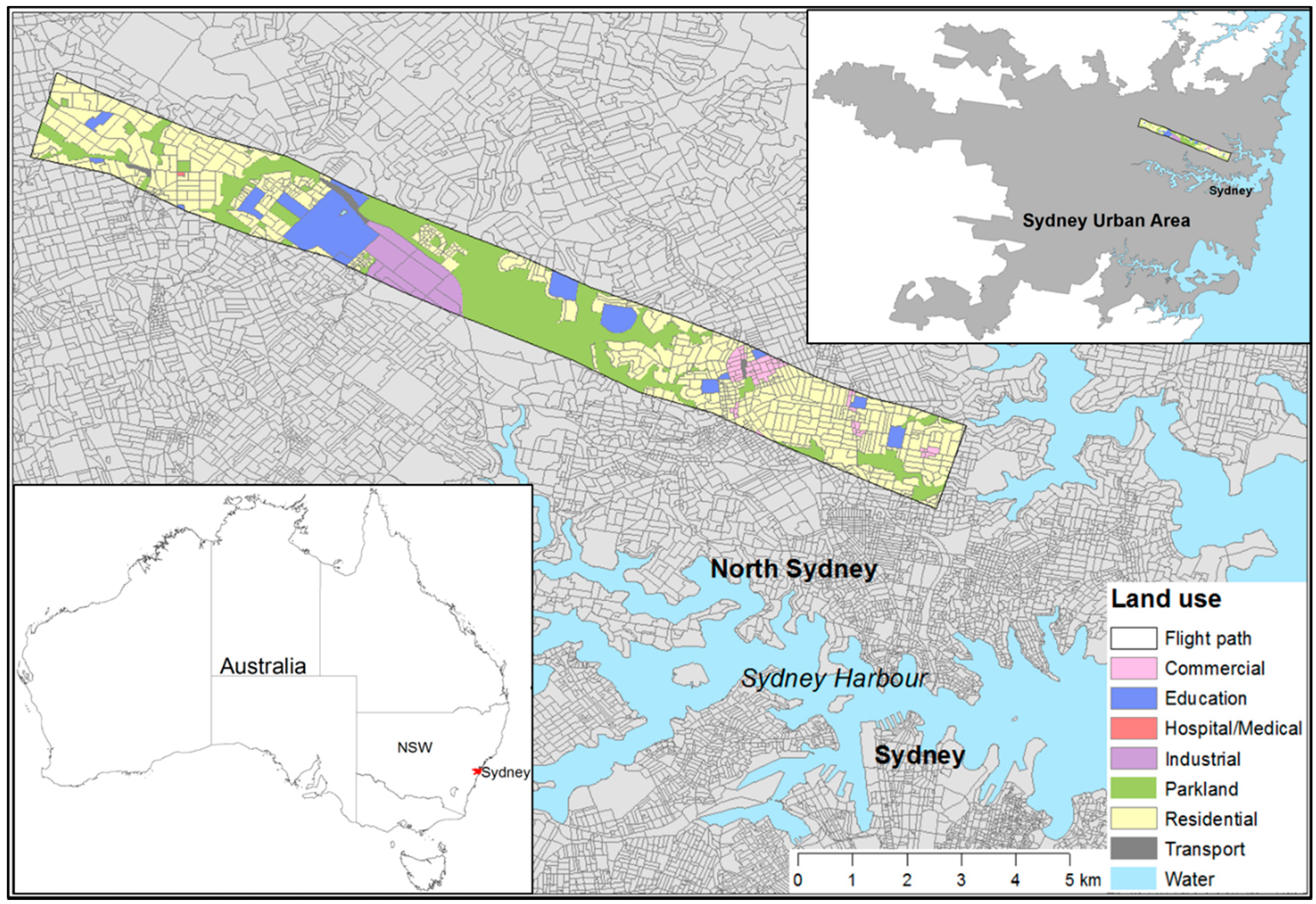
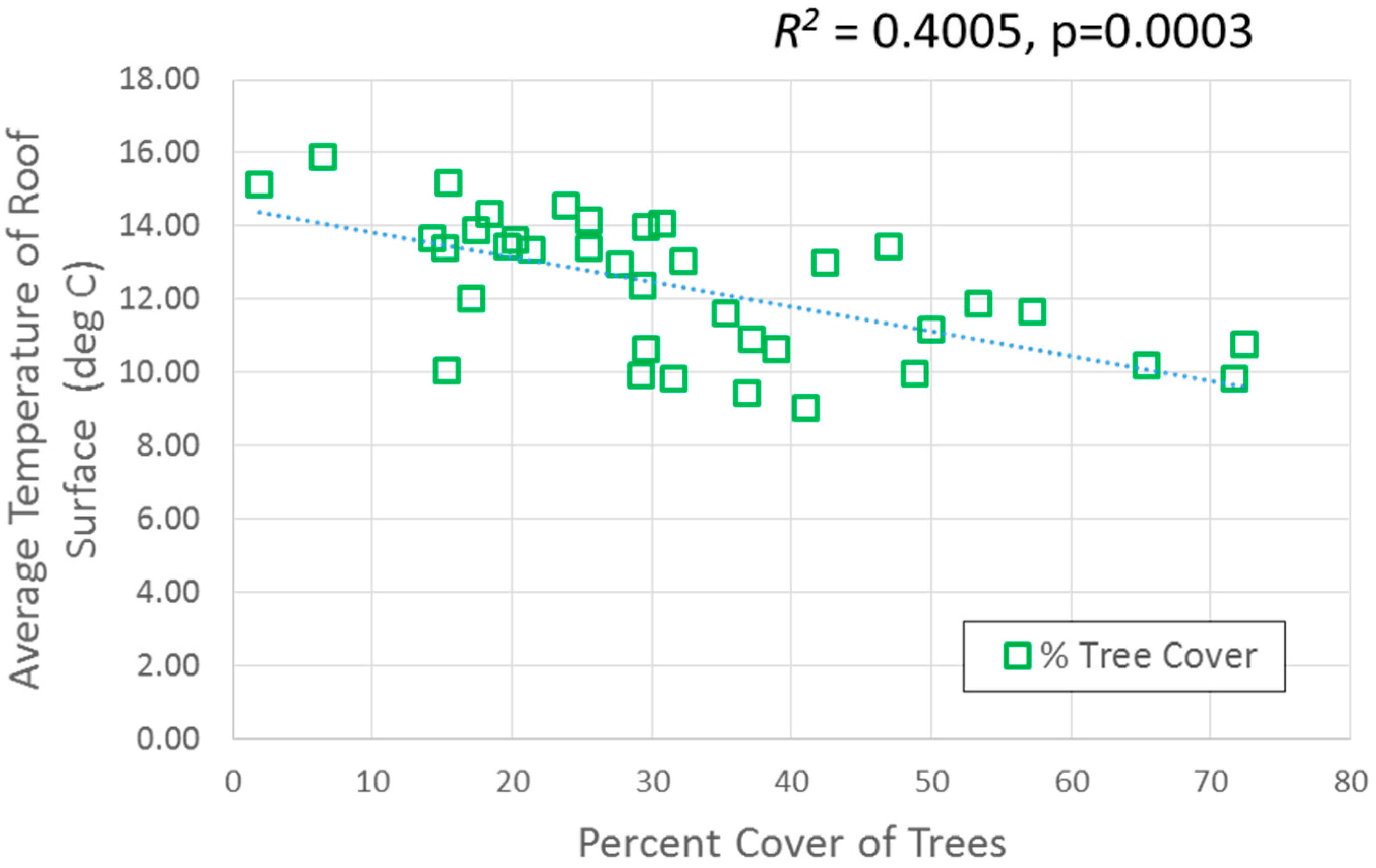
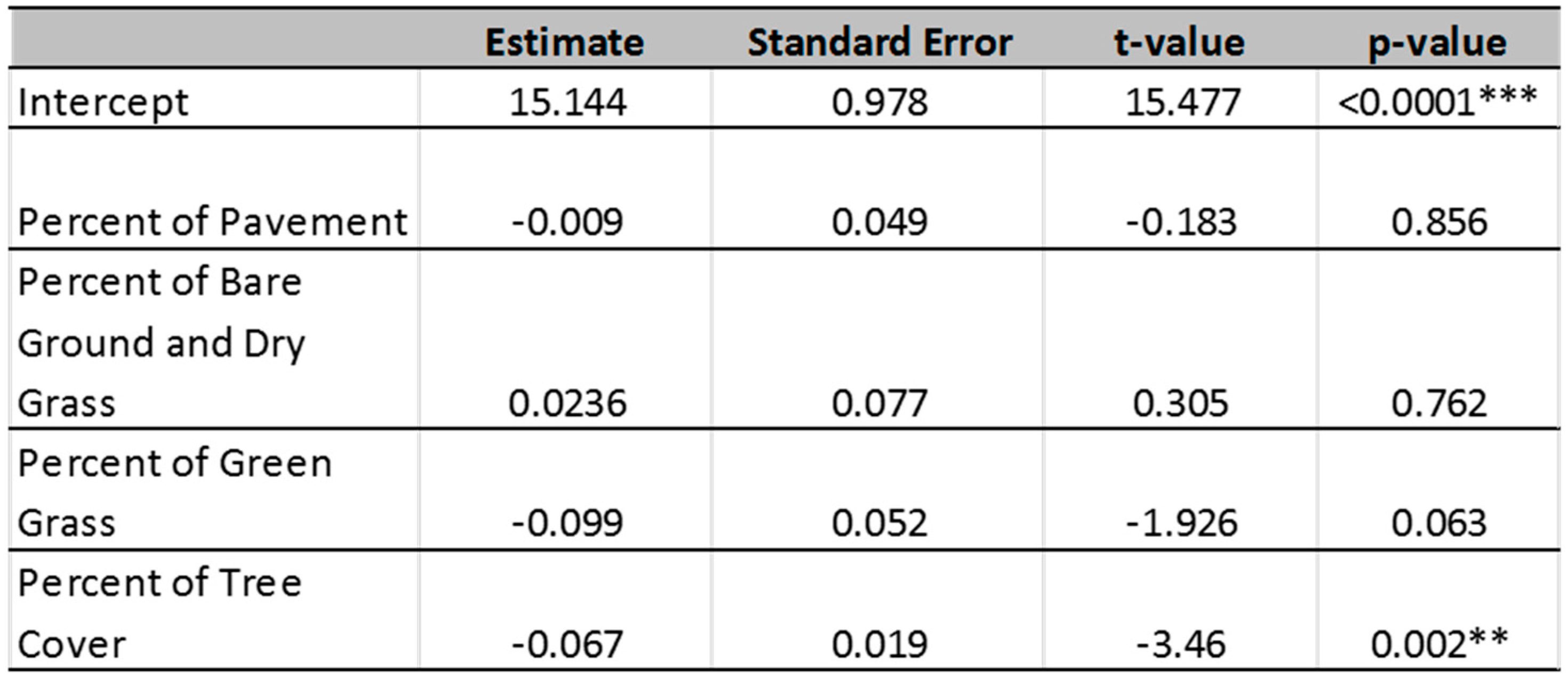
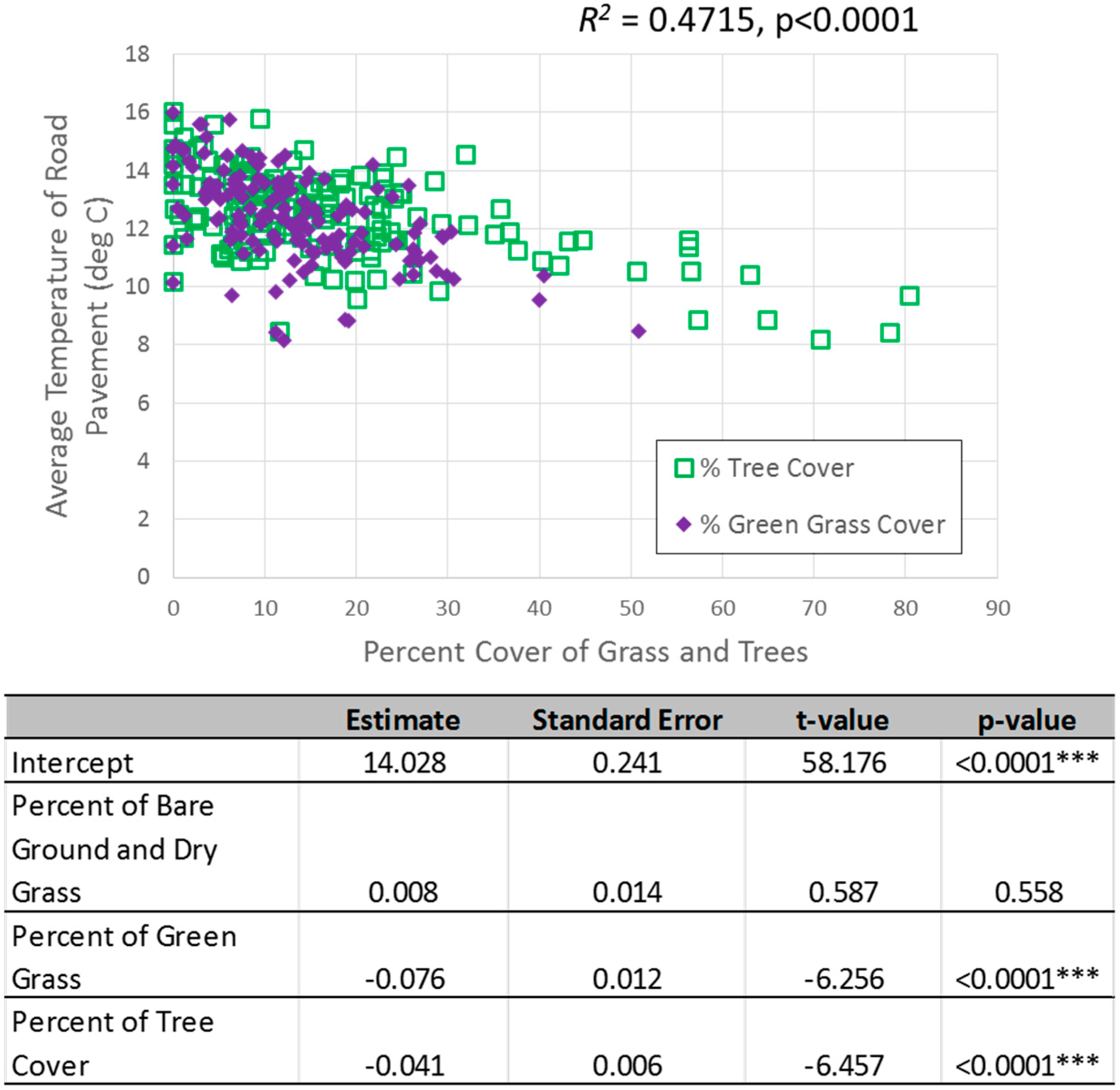
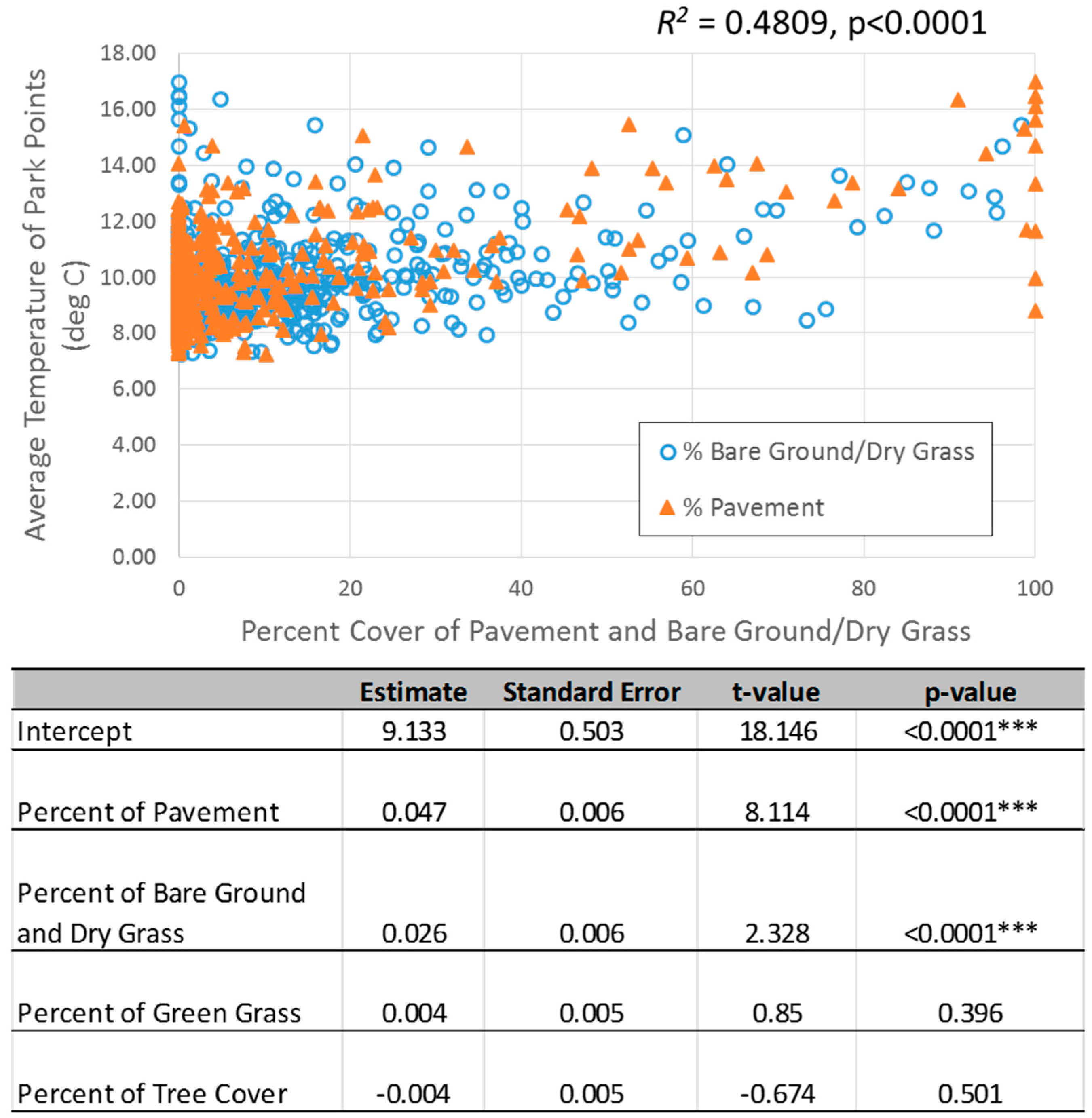
© 2016 by the authors; licensee MDPI, Basel, Switzerland. This article is an open access article distributed under the terms and conditions of the Creative Commons Attribution (CC-BY) license (http://creativecommons.org/licenses/by/4.0/).
Share and Cite
Lin, B.B.; Meyers, J.; Beaty, R.M.; Barnett, G.B. Urban Green Infrastructure Impacts on Climate Regulation Services in Sydney, Australia. Sustainability 2016, 8, 788. https://doi.org/10.3390/su8080788
Lin BB, Meyers J, Beaty RM, Barnett GB. Urban Green Infrastructure Impacts on Climate Regulation Services in Sydney, Australia. Sustainability. 2016; 8(8):788. https://doi.org/10.3390/su8080788
Chicago/Turabian StyleLin, Brenda B., Jacqui Meyers, R. Matthew Beaty, and Guy B. Barnett. 2016. "Urban Green Infrastructure Impacts on Climate Regulation Services in Sydney, Australia" Sustainability 8, no. 8: 788. https://doi.org/10.3390/su8080788





